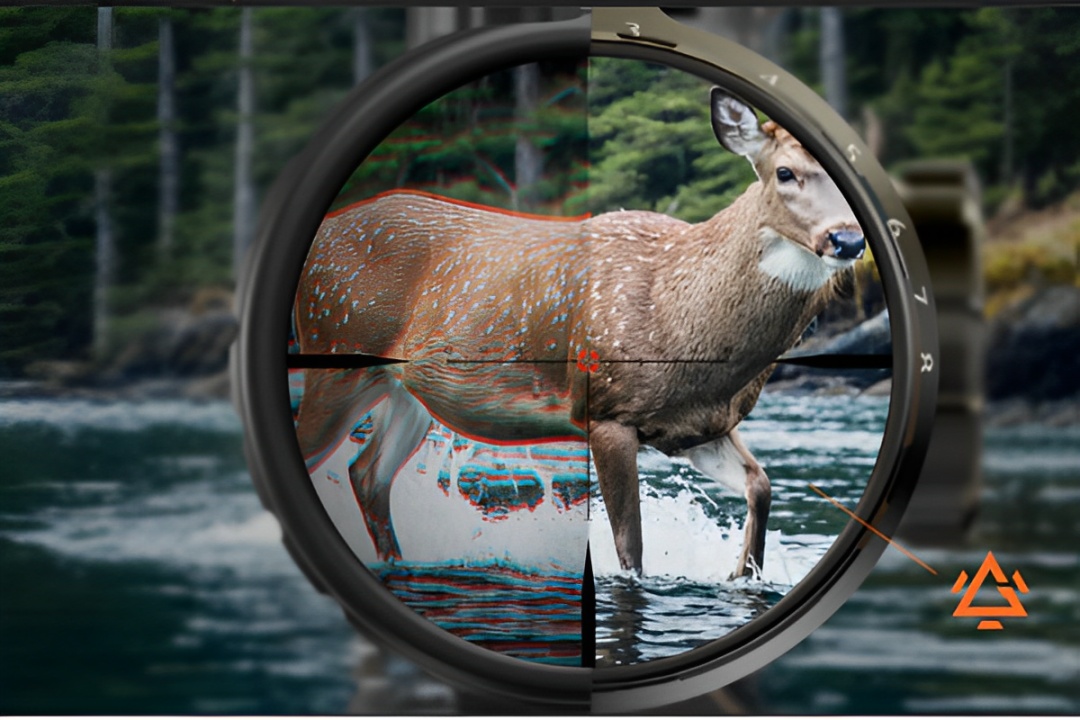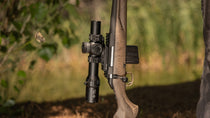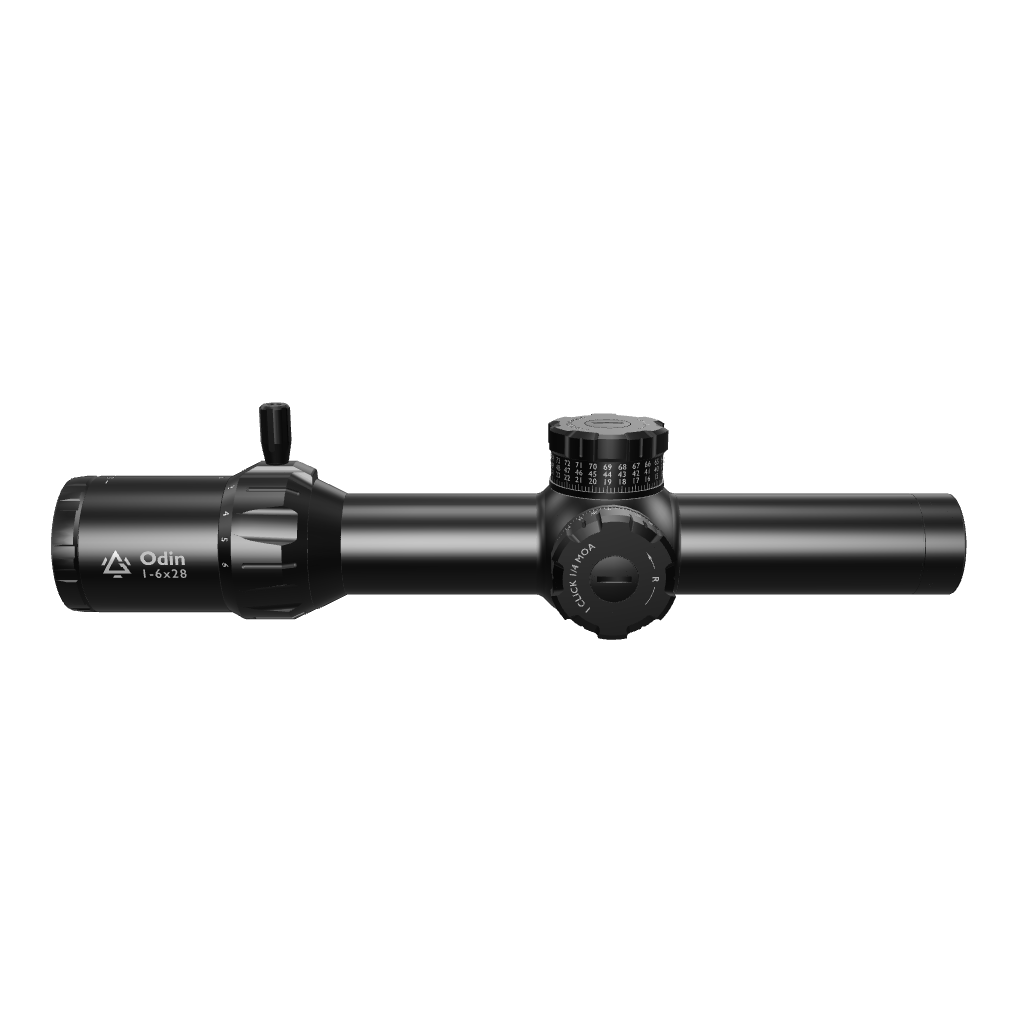Choosing the Best LPVO for AR-10 vs. AR-15: What’s The Difference?
At first glance, picking an LPVO (Low Power Variable Optic) for an AR-10 might seem no different from choosing one for an AR-15, but in terms of caliber, recoil, and intended use, each of these rifles deserves a different kind of LPVO.
Here’s what to keep in mind when choosing the best LPVO for an AR-10 and/or AR-15: both optics may look alike, mount the same way, and have the same basic function, but the most significant differences between the two are those that you cannot see.
If you’re deciding between LPVOs for these two platforms, here’s what sets the AR-10 apart-and what you should keep in mind before you buy.
How To Pick the Best LPVO for AR (AR-15 vs. AR-10)
1. Consider the Differences in Zoom
One of the most significant differences between an AR-10 and an AR-15 is effective range, and this has serious practical implications when choosing an LPVO. Usually, the further the effective range of the AR, the more zoom you need from an LPVO.
- An AR-15 would typically be chambered in 5.56/.223, with a practical effective range of about 300-500 yards. For an AR-15, a 1-4× or 1-6× LPVO is perfectly adequate for the cartridge's range, and best for keeping things light, fast.
-
An AR-10, on the other hand, would likely be chambered in .308 Win, 6.5 Creedmoor, or similar cartridges. These are capable of accurate hits at 600-800+ yards. To take advantage of the extended reach of an AR-10, a 1-8× or 1-10× LPVO makes more sense.
In summary, you need an LPVO with more zoom to match the extended zoom range of an AR-10, which is not necessarily the same for an AR-15 (shorter effective range). So for an AR-10, you are looking for a 1-8x or 1-10x LPVO.
2. Reticle Style and Ballistic Matching
The type of reticle design you choose must also match the ballistics of the rifle, and AR-10s and AR-15s generally have different ballistics.
-
For an AR-15, almost any LPVO will do. Many LPVOs have BDC (Bullet Drop Compensator) reticles designed around 5.56 NATO ballistics. So the majority of LPVOs you find would likely be a good match for an AR-15
- For an AR-10, you need to be more specific and choose a reticle type that will keep your holdovers accurate at a distance. Remember, it is calibrated for the more “heavy” ballistics and has more range.
You can go with either a generic MIL or MOA reticle or one calibrated for your specific caliber (like .308 or 6.5 Creedmoor).
The point is, you need to be more intentional when buying an LPVO for an AR-10. For an AR-15, mostly anything will do, but for an AR-10, you need to be more particular about reticle style and ballistics.

3. Durability and Recoil Resistance
ARs generally are not the rifles with the most felt recoil, but an AR-10 has more felt recoil than an AR-15, and this is important when you are trying to decide which LPVO to buy for one or both of them.
- For an AR-15, low recoil means almost any decent LPVO will hold zero reliably. Besides, there are many ways you can manage recoil with an AR-15.
- For an AR-10, you need a more durable (and probably more expensive) LPVO. The .308-class recoil of an AR-10 is likely to shake a subpar LPVO loose over time.
So, in terms of recoil resistance, an AR-10 demands an LPVO that is more tenacious and durable than an AR-15.
- Look for ratings that mention recoil resistance, “shockproof,” or testing with high-caliber rifles.
- Look for the caliber rating. If it is rated for cartridges stronger than yours (e.g., .308 or .300 Win Mag), it will handle AR-15 or AR-10 recoil easily.
- Durability testing. Brands often list drop tests or thousands-of-round endurance tests.
- User reviews: See if you can find feedback from shooters using similar or heavier-recoiling firearms.
The ODIN LPVOs from Gunnr, for example, have been put through 1,000 impacts at 1,000G and 2,000 live fire rounds, to ensure they are tough enough to handle heavy recoils and accidental drops.
In general, you need an LPVO with a proven reputation for holding zero under heavier recoil. A zero-stop function is a must-have when you are buying an LPVO for an AR-10.
4. Eye Relief
Eye relief is a small but important comfort factor to consider when buying an LPVO for AR-10 vs. AR-15. Generally, scope bite is more of a risk with an AR-10, so it requires more eye relief since it typically handles larger, more powerful cartridges.
- For an AR-15, an LPVO with eye relief around 3.0-3.5 inches is sufficient for most shooters.
- For an AR-10, a little extra eye relief is needed. Go for an LPVO with 3.5–4.0 inches to help prevent scope bite and give a more forgiving sight picture under recoil.
That being said, it is not unusual for shooters to use an optic with shorter eye relief on an AR-10 or an optic with longer eye relief on an AR-15. Setting eye relief mostly comes down to the personal preferences of the shooter. But just keep these guidelines in mind, and consult an eye relief chart if in doubt.
5. Weight Considerations
The differences in weight between an AR-10 and an AR-15 also play a role in which LPVO you should choose. Generally, most people choose lighter LPVOs for the AR-15s and heavier LPVOs for AR-10s, but on an individual level, it can come down to personal preferences.
- For an AR-15, lighter optics are generally preferred: they are more suitable for the lower effective range, and keep the rifle quick and maneuverable, especially for close-quarters or competition use.
- An AR-10 is already heavier than an AR-15. So, to keep their setup as light as possible, some shooters prefer a lightweight LPVO for AR-10s.
However, the counterargument is that the AR-10 is already heavier. So, you can tolerate a slightly heavier but more robust LPVO for more sophisticated uses.
Consider ODIN LPVOs for your AR Rifle
With Gunnr LPVOs, durability is a given, whether you are going for an LPVO for an AR-15 or AR-10. Made of 7075 aluminum alloy, all LPVOs in the ODIN collection have been tested to withstand 1,000 impacts at 1,000G and 5,000 live fire rounds, which makes them suitable for both an AR-10 and AR-15.
- For an AR-15, consider the ODIN 1-6x FFP LPVO.
- For an AR-10, take a closer look at the ODIN 1-8x FFP LPVO and/or the ODIN 1-10x LPVO
Final Takeaway
So, it is not a matter of slapping on your favorite AR-15 optic. For the AR-10, you’ll want more magnification, stronger recoil resistance, longer eye relief, and ballistics-matched reticles or turrets that help you push the rifle’s effective range.
Think of it this way: the AR-15 is a racecar that shines on short tracks: light, quick, and responsive. The AR-10 is the long-distance runner: built to go farther and hit harder. Your optic should match that mission.







